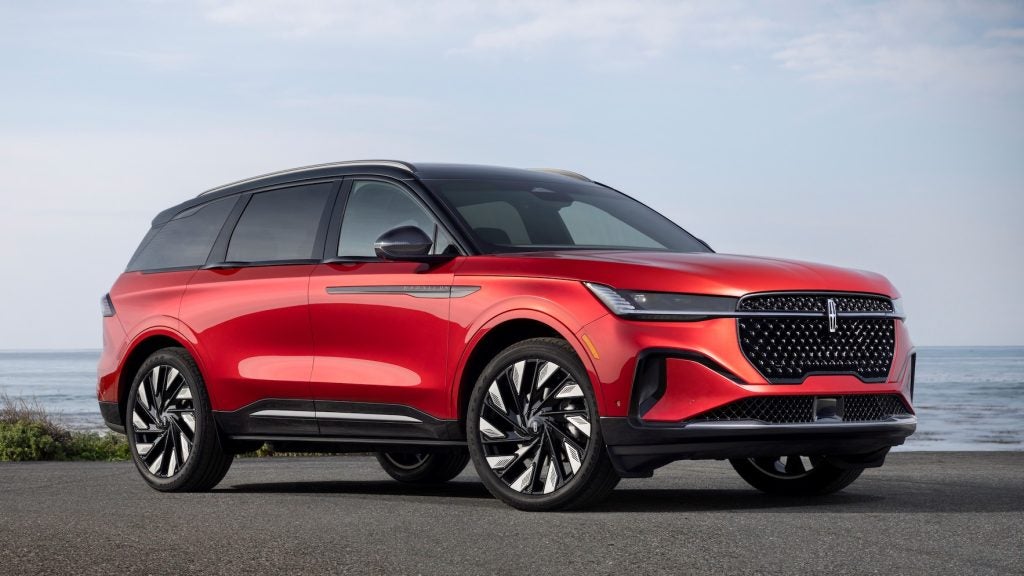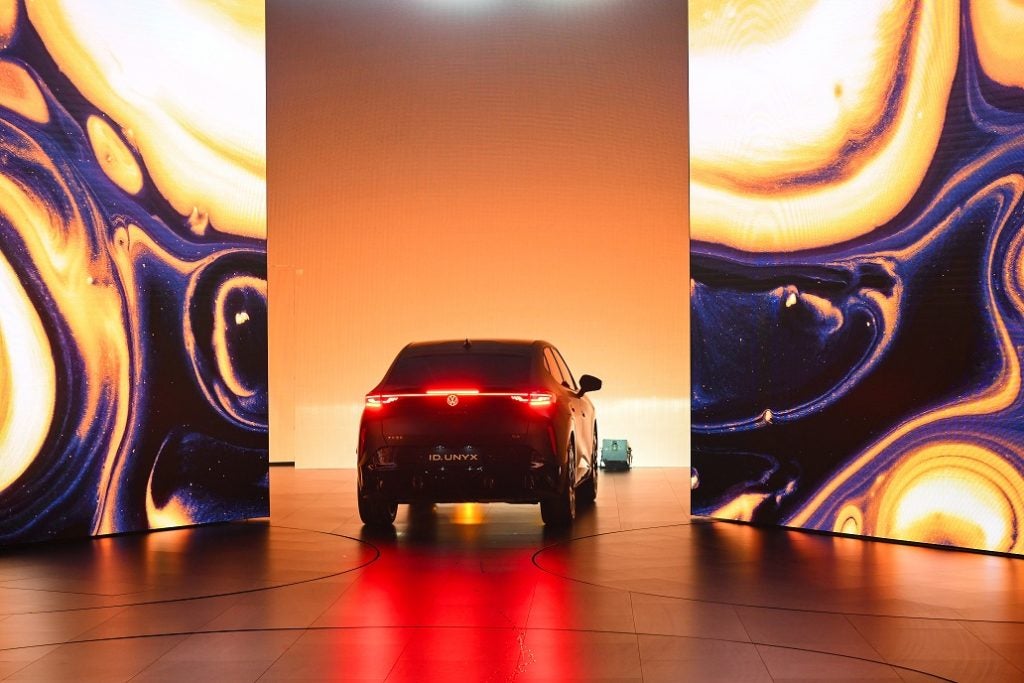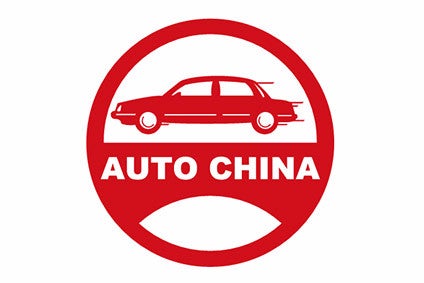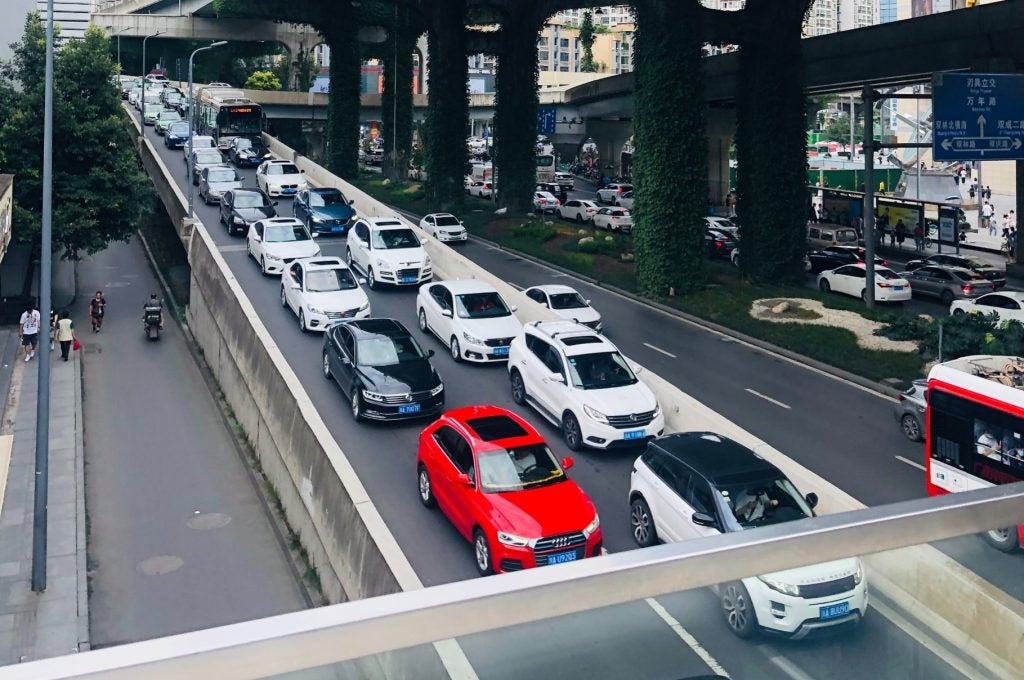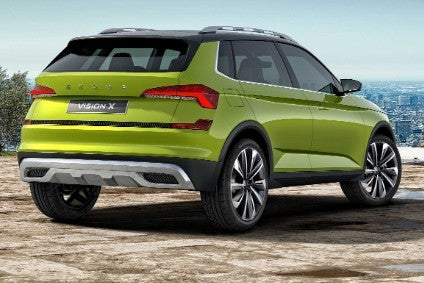
Handsomely profitable and with a record 1.253 million vehicles delivered in 2018, the news only keeps getting better for Škoda. The Czech make has built solid foundations on a small number of category-busting cars, most of which sit outside the size norms of conventional segments and sell in big numbers. Its SUVs are now doing the same and more models are on the way.
This report was updated on 28 January with the official name of the B-SUV, which is Kamiq, not Kosmiq.
Skoda had a great year in China although things were less than terrific during the final quarter: the market went into contraction mode and the brand’s sales did the same. Still, a gain is a gain and deliveries ended 2018 at 341,000 vehicles, a rise of 4.9 per cent. Without the addition of models such as the unique-to-China Kamiq and Kodiaq GT it would have been a different story, though. The Volkswagen Group’s approval of Skoda’s added crossovers and SUVs shows the seriousness of the business’ plans to lift deliveries in the number one market to 600,000 units by 2020. Will that goal be attained? Possibly not, if the market continues to suffer the jitters. Yet Skoda is pressing ahead and has a lot of fresh products still to come, starting with quite a few which are due out this year.
Deliveries in 2018 (in rounded units, listed by model; +/- percentage compared to 2017):
- Octavia (388,200; -7.3%)
- Rapid (191,500; -9.5%)
- Fabia (190,900; -7.6%)
- Kodiaq (149,200; +49.3%)
- Superb (138,100; -8.5%)
- Karoq (115,700; new)
- Kamiq (only sold in China: 27,900; new)
- Citigo (only sold in Europe: 39,200; +5.5%)
- Yeti (13,100; -81.2%)
Cars
The second generation Citigo is again expected to be manufactured in Slovakia. It will be manufactured alongside the successors for the VW up! and SEAT Mii, production being due to commence during the second quarter of this year.
How well do you really know your competitors?
Access the most comprehensive Company Profiles on the market, powered by GlobalData. Save hours of research. Gain competitive edge.

Thank you!
Your download email will arrive shortly
Not ready to buy yet? Download a free sample
We are confident about the unique quality of our Company Profiles. However, we want you to make the most beneficial decision for your business, so we offer a free sample that you can download by submitting the below form
By GlobalDataThe Volkswagen e-up! has not been a big seller but still, the group is planning a successor with a lower price and a longer range. SEAT will be given its own version of the second generation car, as will Skoda – at the moment, only the Volkswagen is available in electric form. The electric variants should go on sale during the fourth quarter.
The brand’s main B segment model is the Fabia. The current generation has been available since 2014 and was given a facelift last year. The successor model, which is due for launch in 2022, should be the first Volkswagen Group vehicle for the MQB A0 Evo platform.
This year sees the long-awaited entry of Skoda to Europe’s C segment. Until now, Volkswagen prevented the Czech brand from offering any internal competition to the Golf. The 4,362mm long Scala, which will be a five-door hatchback (there could be a sedan for India, China and certain other countries too), is also the replacement for two vehicles: the Rapid/Rapid Xin Rui (hatchback) and Rapid Spaceback/Rapid Xindong. The model name for European markets was announced in October 2018 with the vehicle revealed to the media at an event two months later. It is presumed that the car to be built and sold in China will also be called Scala. Build commences at a plant in the Czech Republic in March. The mid-cycle facelift should happen in 2023 with a replacement due in 2027.
The next generation of the Octavia five-door hatchback, wagon and Scout range is due on sale in 2020 after a world debut at this year’s Frankfurt IAA. Length is expected to rise closer to the 4.7m mark. The current hatchback is 4,659mm and that was a 90mm gain over the previous generation. The life cycle should be seven years with a facelift in 2024. The new model will have the same platform as the next VW Golf.
The current generation Superb hatchback had its world premiere at the Geneva motor show in March 2015 with production at the Kvasiny plant commencing later that month. The same Czech factory began building the combi (wagon) in the June. A facelift is therefore overdue and should be revealed at the Geneva show in early March.
The Superb straddles two segments and manages to outsell many models in traditional size classes just above and just below it – the same recipe which works so well for the Octavia.
Most E segment models are 5m or more long, but the Superb measures 4,860mm as a hatchback and a combi. It is therefore slightly too big for the D segment. Volkswagen itself has tried to see if it is able to replicate the success of the big Škoda in a higher price bracket: the Arteon is 4,862mm long hatchback, making it a bigger car with a different style of body to the CC which it replaced.
China’s Superb retains the Supai model name of the previous generation hatchback. Its local premiere was at April 2015’s Shanghai motor show. It is manufactured by SAIC Volkswagen. Hatchback production commenced in October 2015. As was the case with the previous model, the wagon is imported.
Crossovers and SUVs
There was, strangely, no direct successor launched after the Roomster Scout was discontinued in 2016. The Vision X, a concept at the 2018 Geneva motor show, confirmed that the brand would be returning to the B-SUV segment. The production version, which some thought would be called Kosmiq, will be revealed at this year’s show. Update on 28 Jan: the name has now been announced as ‘Kamiq’. Details of the platform; manufacturing locations; start of production, facelift, and end of build dates; plus expected annual build by plant and other key data can be found for this and other current and future models in PLDB. A link to the database is provided at the end of this feature.
The Karoq replaced the big-selling Yeti. Why Skoda dropped a name which was so well known in European countries remains a mystery. It’s probably due to a decision to standardise all crossovers and SUVs with a K-something word, just as Volkswagen now uses a T as the first letter for its own such models (e.g. T-Cross, Tanrong, T-Roc, Tiguan, Tange, Tayron, Touareg). Here though, there is an exception: the Teramont is called Atlas in Canada and the USA. The frozen-out, much-missed snowman might be allowed to come in from the cold one day.
Even if buyers can’t agree on how the name is pronounced (some call it the k’ROCK), they do seem to be taking to this model. Production commenced in the Czech Republic during July 2017 but the ramp up was intentionally slow and the first vehicles did not reach customers until the October. Since then, sales have taken off as the table above shows. Unlike some rivals such as the Peugeot 3008, the Karoq can be ordered with all-wheel drive.
The 4.4m long SUV was originally built at Kvasiny but in January 2018, build was added at another Czech plant: the company’s main factory adjacent to its headquarters in Mladá Boleslav. SAIC Volkswagen also began manufacturing the Karoq in January 2018. Build at the former Karmann works in Germany was then added just a few weeks ago. This is a temporary measure while Mladá Boleslav has its paintshop updated.
The second generation generation Karoq (SoP: 2025) would not be built in the same lead plant as the current one, Volkswagen announced in November 2018. It should be manufactured in a new factory which the Group plans to have erected in Turkey. The official announcement of the location is yet to be made.
The Kodiaq D segment SUV was added to the Skoda line-up from early 2017: that was when the first customer deliveries took place. As well as being built in Europe, and in China by the SAIC Volkswagen JV, the Kodiaq should also be assembled in India. Russian assembly by Gaz Group (in Nizhny Novgorod) commenced in February 2018. The Kodiaq Scout, which has model-specific front and rear ends, 19-inch alloy wheels and all-wheel drive had its world premiere at the Geneva motor show in March 2017.
The RS (vRS in the UK) premiered at the Paris motor show in October 2018. It has a standard 176kW (239PS) and 500Nm 2.0-litre biturbo engine, the most powerful diesel yet in a Skoda.
The European production location for a second generation Kodiaq will again be Kvasiny, Volkswagen told the media in November 2018. That model is due out in 2024.
In addition to the Kamiq (set to be joined by the future Kamiq GT), the Kodiaq GT is another that is exclusive to China. SAIC Volkswagen revealed this second model for its presence in the D-SUV segment at the Guangzhou motor show two months ago. The GT is more curved in its styling than the Kodiaq and at the rear has Š K O D A in large letters across the tailgate. Expect the Kodiaq GT to be facelifted in 2022 and for a successor to be released in 2025.
Electric
This year sees the arrival of the first plug-in hybrids as well as a fully electric Skoda. The PHEV will be part of the Kodiaq line-up and there will also be a petrol-electric plug-in version of the Superb. A second generation of the Citigo in electric form will be the brand’s EV premiere.
Another model will be added to what will by then be a multi-vehicle electrified line-up during 2020: in June last year, SAIC Volkswagen told the Chinese media that it would manufacture a Karoq BEV (battery electric vehicle).
Skoda has been very quiet on any plans which it has been given by the parent firm for an MEB architecture EV. No doubt that is all about not diverting any attention from the raft of Volkswagen MEB models which will be launched from the end of this year onwards. So where in the Skoda line-up would there be a logical space for an additional car? Even with the arrival of the Scala there is still quite a size gap above this model and below the Octavia. The brand should therefore position its first vehicle which is built on a dedicated EV platform into that niche, which means a length of between 4.4 and 4.6 metres.
The plug-in range should eventually look like this:
- Citigo BEV (2019)
- Kodiaq PHEV (2019)
- Superb PHEV (2019 or 2020)
- Karoq BEV (2020)
- Octavia PHEV (2020)
- Scala PHEV (2021)
- 4.5m long MEB architecture BEV (2021)
- European Kamiq PHEV or BEV (2021)
- Fabia BEV (2022)
Recent reports for many other manufacturers’ future models are grouped in the OEM product strategy summaries section of just-auto.com.
Future product program intelligence
More detail on past, current and forthcoming models as well as additional Škoda vehicles which are not in the feature above such as the Kamiq and Kamiq GT can be found in PLDB, the future vehicles database which is part of QUBE.
Following this feature and others examining VW cars and then VW pick-ups and SUVs, the next makes to be featured in the Volkswagen Aktiengesellschaft series will be SEAT and Cupra, then Audi; with the series rounded out by two further reports: one on Porsche and the other on Bugatti, Bentley and Lamborghini.



